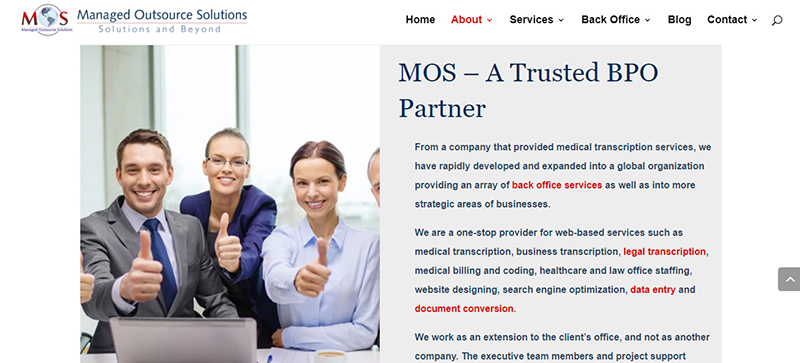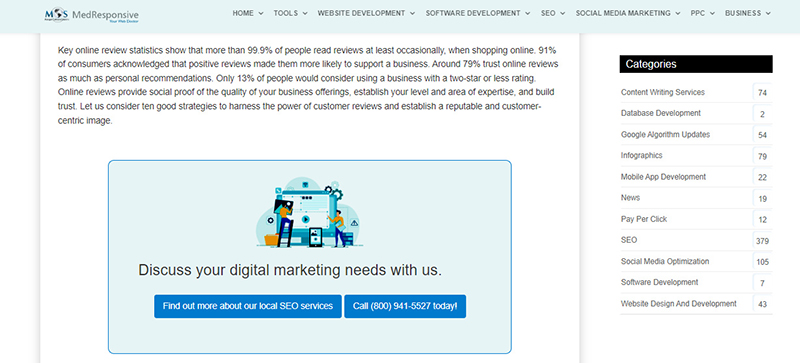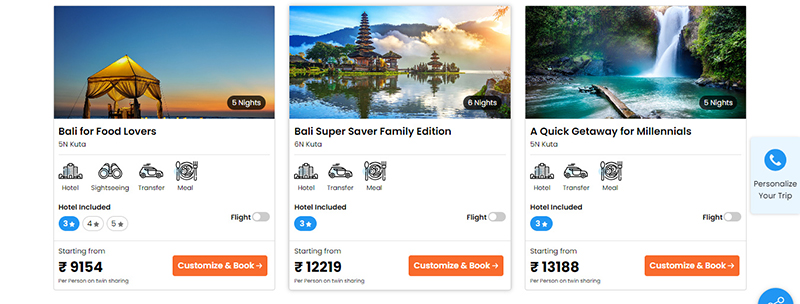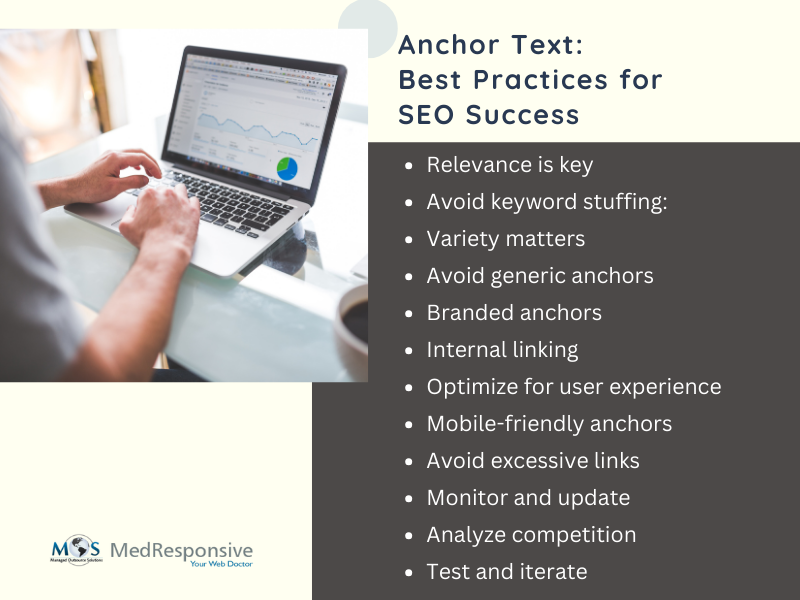Anchor text is the visible, clickable text in a hyperlink that leads to another webpage. It serves as a descriptive label for the linked content, providing context to both search engines and users about the destination page’s topic or content. This plays a pivotal role in enhancing the user experience, aiding in navigation, and significantly impacting search engine optimization (SEO). Anchor text usually appears in a different color than the surrounding text and is often underlined.
At MedResponsive, our team of experienced SEO professionals will meticulously assess your existing anchor text profile, identify opportunities for improvement, and craft a tailored strategy to enhance your link-building efforts.
Why Anchor Text Matters for SEO
Anchor text holds a crucial position in search engine optimization (SEO) for several reasons:
- Relevance and context: Anchor text provides a concise summary of what the linked content is about. It serves as a cue to both users and search engines, offering context and relevance to the linked page.
- Keyword emphasis: The choice of words in such text allows SEO practitioners to strategically highlight specific keywords or key phrases, potentially boosting the linked page’s visibility for those terms in search engine results.
- User experience: Well-crafted text enhances the user experience by offering clear guidance. Users can quickly determine where a link will lead them, aiding navigation and reducing bounce rates.
- Search engine ranking: Search engines, such as Google, analyze anchor text to assess the content’s quality and relevance. This analysis influences how a webpage ranks in search results.
- Link building strategy: For off-page SEO, anchor text is a fundamental component of link building strategies. Using diverse and relevant anchor text helps build authoritative and natural backlinks.
- Avoiding penalties: Over-optimized or spammy linkable text can lead to SEO penalties. Understanding how to use anchor text appropriately helps prevent such pitfalls.
- Semantic analysis: Search engines employ semantic analysis to comprehend the context and meaning of words. Anchor text assists in this process, allowing search engines to make more accurate associations between keywords and content.
Hyperlinked text serves as a critical bridge between web content, users, and search engines. It impacts SEO performance by emphasizing keywords, offering context, enhancing user navigation, and influencing search engine rankings. Therefore, a well-thought-out anchor text strategy is an indispensable element of any effective SEO campaign.
Types of Anchor Text
- Exact Match: Hyperlinked text qualifies as “exact match” when it contains a keyword identical to the content of the linked page. For example, if you’re linking to a page about “best smartphones,” the anchor text would be “best smartphones.”
- Partial Match: Partial match text comprises a keyword variation that aligns with the content focus of the linked page. This entails the inclusion of the target keyword, either partially or in full, within the anchor text, accompanied by additional words for contextual clarity. An example is using, “top-rated SEO tools: for a page about “best SEO tools.”
- Branded: Branded anchor text involves solely using the brand name as the anchor, without any accompanying words. This type of anchor text is effective when referencing a source or providing a direct link to a website. For example, “Apple” for a link to Apple’s official website.
- Generic: This type of text used in hyperlinking is typically less specific and descriptive compared to other types. Unlike anchor text that includes keywords or phrases related to the linked content, generic anchor text tends to be more general and can include phrases like “click here,” “read more,” or “learn more.”
- Naked URLs: These are anchor texts that display the full URL of the linked page. Naked hyperlinked text is simple to employ, yet it may not be the most impactful. It is frequently utilized for referencing sources, like images or quotes, and involves directly pasting the unadorned URL into a post.
- Image (Alt Text): Also known as alt text or alternative text, image linkable text is a crucial element in web content and design. It refers to the descriptive text associated with an image on a webpage, which can be read by screen readers for visually impaired users and plays a significant role in SEO.
Anchor Text and User Experience: A Vital Connection
Anchor text is not just about optimizing SEO; it plays a pivotal role in enhancing the overall user experience on the web.
Here’s why anchor text and user experience are intricately connected:
- Navigational clarity: Users can quickly gauge where a link will take them, aiding in efficient navigation.
- Contextual relevance: Anchor text provides context and relevance to the linked content. This transparency fosters trust and a positive user experience.
- Accessibility: Screen readers used by individuals with visual impairments rely on this text to interpret and convey the purpose of links. Descriptive text ensures inclusivity and a better experience for all users.
- Content engagement: When anchor text aligns with user intent and expectations, it can lead to more prolonged and meaningful engagement with your content.
- Mobile responsiveness: User-friendly hyperlinks ensure that links are easily clickable, contributing to a seamless mobile experience.
- Reducing bounce rates: Well-optimized linkable text can reduce bounce rates by ensuring users find the content they were seeking.
- Content hierarchy: Structured text guides users to essential sections or related topics within your content, improving their experience by helping them find what matters most to them.
- Link trustworthiness: Descriptive text helps establish this trust by clearly communicating the destination and relevance of the linked content.
Actionable Steps to Enhance Your SEO with Anchor Text
-
- Keyword research
Identify relevant keywords and phrases related to your content and industry.
-
- Strategic placement
Use keywords naturally in your content and place them strategically in anchor text.
-
- Diverse anchors
Use a mix of anchor text types, including exact match, partial match, branded, and generic.
-
- Relevance is key
Ensure anchor text aligns with the linked content to provide context to users and search engines.
-
- Internal linking
Create a logical internal linking structure, guiding users to related content within your website.
-
- Quality backlinks
Earn high-quality backlinks from reputable websites with relevant anchor text.
-
- Avoid over-optimization
Don’t overuse exact match keywords in anchor text; maintain a natural balance.
-
- Regular audits
Periodically review and update anchor text for accuracy and relevance.
-
- Mobile optimization
Ensure that anchor text is user-friendly on mobile devices for a seamless experience.
Real-world Examples of Successful Anchor Text Usage
Check out some examples that illustrate how anchor text can be used in different contexts to enhance user experience, improve SEO, and drive user actions, ultimately achieving the intended goals of the website or content.
- Blog Posts and Articles: Successful bloggers and content creators use anchor text to provide additional information or resources. In our blog post on “How to Attract Customer Reviews for Your Local Business,” the anchor text “Find out more about our local SEO services” takes readers to MedResponsive’s landing page for local SEO services.
- E-commerce Product Listings: Online retailers like Amazon use descriptive anchor text for product listings. For example, an anchor text like “Shop Now – Samsung Galaxy S21” takes users directly to the product page, making it clear and enticing for shoppers.
- Business Websites: Business websites use anchor text for call-to-action buttons. For instance, a “Contact Us” anchor text on a law firm’s website leads users to the contact page, simplifying the process of getting in touch.
- Travel Websites: Travel booking websites often employ anchor text effectively for destination pages. An anchor text like “Explore Bali Hotels” guides users to a page where they can browse and book accommodations for their trip.
Best Practices for Optimizing Anchor Text
Anchor text optimization is a fundamental aspect of effective SEO and user experience. To maximize the benefits of link text, consider these best practices –
- Relevance is key: Ensure that the anchor text you use is relevant to the content it links to. It should give users a clear idea of what they can expect when they click on the link. Irrelevant or misleading anchor text can lead to a poor user experience and harm your SEO efforts.
- Avoid keyword stuffing: Incorporate your target keywords naturally into your anchor text, but avoid over-optimization. It’s essential to strike a balance between using keywords and maintaining readability. Google’s algorithms are smart enough to detect keyword stuffing and may penalize your site for it.
- Variety matters: Diversify your anchor text. Instead of using the same anchor text repeatedly, mix it up with variations, synonyms, and related phrases. This not only makes your content more user-friendly but also helps you avoid Google’s algorithmic penalties.
- Avoid generic anchors: While generic anchors like “click here” or “read more” have their place, try to use more descriptive and specific anchor text whenever possible. Descriptive anchor text provides context and helps users understand the content they’re about to access.
- Branded anchors: Include branded anchor text to strengthen your brand presence and trust. When linking to your own site, use your brand name or variations of it as anchor text. For example, “Visit OpenAI” for a link to OpenAI’s website.
- Internal linking: Utilize anchor text for internal linking to improve site navigation and SEO. Linking to relevant internal pages with descriptive anchor text can help search engines understand your site’s structure and the relationships between different pages.
- Optimize for user experience: Embedded text should enhance the user experience by guiding users to valuable and relevant content. Make sure that the link destination fulfills the expectations set by the link text.
- Mobile-friendly anchors: Consider mobile users when crafting anchor text. Keep it concise and clear, as mobile devices have limited screen space. Test the usability of anchor text on both desktop and mobile devices. For example, consider mobile-friendly anchors such as – “Find a Location” and “Call Now” that makes it easy for readers to interact with content on smaller screens.
- Avoid excessive links: Don’t overwhelm your content with too many links. Quality should always come before quantity. Use links judiciously and only when they genuinely add value to your content. Here’s an example for overloading anchor text with keywords to manipulate search engine rankings: “Our affordable SEO services guarantee top rankings for your business. Contact our SEO experts for the best SEO services in town. SEO is our specialty, and our SEO team excels in SEO strategies.”
- Monitor and update: Regularly review your anchor text strategy. As your content evolves, update anchor text to ensure it remains relevant. Also, periodically check for broken or outdated links.
- Analyze competition: Analyze your competitors’ anchor text strategies to identify opportunities and gaps. You can use SEO tools such as – Ahrefs, Moz Pro, Semrush, Ubersuggest or MedResponsive SEO tool to perform competitive analysis and gain insights into what’s working in your industry.
- Test and iterate: A/B testing can be valuable for optimizing anchor text. Experiment with different anchor text variations and monitor their impact on click-through rates and rankings. Use the data to refine your strategy.
By following these best practices for anchor text optimization, you can enhance both the user experience and your SEO efforts, ultimately improving your website’s visibility and search engine rankings.
10 Best Tools for Anchor Text Analysis
Analyzing hyperlinked text is a crucial aspect of SEO strategy. Here are 10 best tools for anchor text analysis:
- Ahrefs: A comprehensive SEO tool that provides insights into anchor text distribution, backlink profiles, and competitor analysis.
- Moz Pro: Offers in-depth link analysis, including anchor text information, to help you understand your link profile and make data-driven decisions.
- Semrush: Provides anchor text analysis, backlink auditing, and competitive research to improve your link-building strategies.
- SEMrush Backlink Analytics: A specific tool within Semrush that focuses on backlink analysis, including anchor text and referring domains.
- Majestic: Known for its link analysis capabilities, Majestic offers detailed information about anchor text and backlinks.
- CognitiveSEO: Allows you to explore your backlink profile, anchor text distribution, and identify opportunities for improvement.
- Ubersuggest: Neil Patel’s tool includes a backlinks analysis feature that provides insights into anchor text usage and link quality.
- Serpstat: Offers anchor text analysis and backlink profile insights to help you understand your competitors’ strategies.
- LinkResearchTools: Provides comprehensive backlink analysis, including anchor text distribution and link quality assessment.
- Google Search Console: A free tool by Google that offers insights into your website’s anchor text usage, click-through rates, and keyword performance.
These tools offer various features and levels of analysis, so you can choose the one that best suits your specific SEO needs and budget.
By understanding and effectively utilizing anchor text, you can enhance your SEO efforts, improve user experience, and achieve better search engine rankings for your website. When crafting link text, it’s essential to prioritize user needs alongside SEO objectives. A professional digital marketing services company can assist you in optimizing the linkable text on your website.








